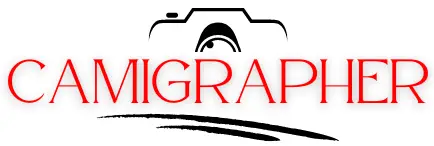You can connect your Canon EOS Rebel T3i Digital SLR camera to your computer to upload photos and videos, check and change settings, and print photos. The following steps show you how to do this.
Contents
How to Connect Canon Camera to Laptop & Desktop Computers
[ytvideo]
Find the USB cable that came with your camera.
Plug one end of the USB cable into the “USB” port on the back of your camera and the other end into a USB port on your computer. The camera should now be recognized as a compatible device.
Connect the small end of the cable to your camera.
The large end of the cable connects to your computer’s USB port
Windows:
Click the Start button
Click All Programs
Click Accessories
Click Windows Photo Gallery
Click Connect to Canon Camera
Mac:
Click the Apple icon in the top left corner
Click System Preferences
Click Photos
Click Connect to Canon Camera
If you are using a Mac Mini, you will need to plug the cable in from the back.
Connect the other end of the cable to your computer.
Plug the male end of the USB cable into the back of your camera
Plug the female end of the USB cable into your computer
Turn your camera on by pressing the power button
Windows will show a new device called “ Canon Camera”. If you don’t see this, Windows might not have detected your camera. Right-click on this device and select “New Hardware Device”
You’ll be prompted to give your camera a name. Give it the name “ Canon Camera”
Next, you’ll be asked to select the device driver. Click on the “Browse” button and navigate to the folder C:Program Files (x86)CanonCamera Utility
Once you’ve found the “Canon Camera” device driver, click on it and select “Install”
Your camera will now be installed and ready to use.
Turn on your camera.
Connect your camera to your computer using the included USB cable
Open the Canon Camera Window
Click on the SETTING tab
Make sure you have the correct driver installed
In the USB Connection Type drop down, select PictBridge
In the PictBridge Connection Type drop down, select IEEE 1394 Camera(4pin)
Click on the SETTINGS button
In the Main Settings window, make sure the following boxes are checked:
turned on:
In the Advanced Settings window, make sure the following boxes are also checked:
In the Output Settings window, make sure the following boxes are checked:
Click on the OK button
Now you are ready to take pictures!
Your computer should now recognize your camera.
Assuming your camera supports USB mass storage class (MMC), plug your camera’s USB cable into your computer’s USB port. You may need to turn on your camera’s USB port if it’s not already on.
On your computer, open up the “My Computer” window (on Windows XP, click Start, and then click “My Computer”). In the My Computer window, right-click the drive where your camera’s pictures and videos are stored, and then click “Open.”
If your camera supports Windows Vista or Windows 7, your pictures and videos will be in a folder called “Pictures” or “Videos” on your computer’s hard drive. If your camera doesn’t support Windows Vista or Windows 7, your pictures and videos will be in a folder called “Local Disk (C:)” on your computer.
To view your pictures and videos, click the “Pictures” or “Videos” folder, and then double-click the file named “DCIM.” (If you have more than one camera, each camera’s Pictures folder will have a different name, such as “Nikon D7000 Pictures.”)
To transfer pictures and videos from your camera to your computer, right-click one of the pictures or videos, and then click “Copy.” (If you have more than one camera, each camera’s pictures and videos will be copyable, but they will have different names, such as “Nikon D7000
Conclusion
Plugging a Canon camera into a computer can be a daunting task, but with a few simple steps, everything can be handled easily. By following these simple steps, you can easily transfer photos and videos from your camera to your computer, make copies of important files, and even edit photos and videos. So if you’re ever faced with a dilemma about how to plug a Canon camera into a computer, these steps will provide you with the guidance you need to get the job done easily and smoothly.
